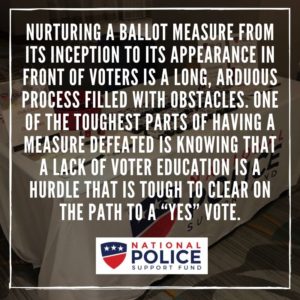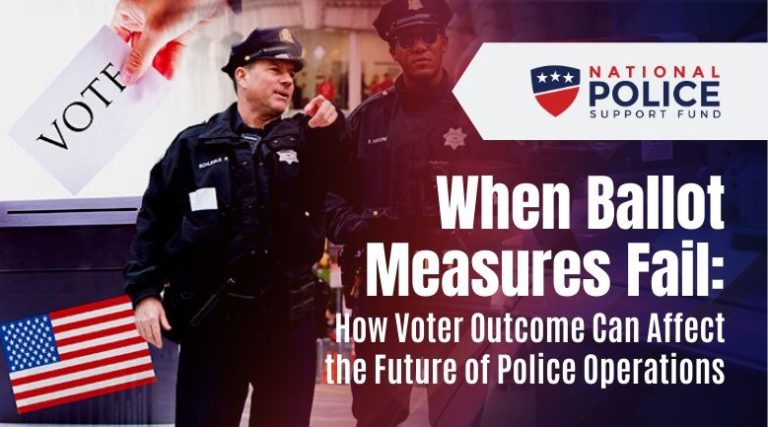Nurturing a ballot measure from its inception to its appearance in front of voters is a long, arduous process filled with obstacles. One of the toughest parts of having a measure defeated is knowing that a lack of voter education is a hurdle that is tough to clear on the path to a “yes” vote. However, in many failures lies opportunity, and taking a closer look at ballot measures that failed to pass the vote may instead illuminate other ways to improve police operations around the country.
Indeed, not all failures can be called defeats — in some cases, the failure to pass a vote may either shed light on other related issues or on opportunities for an alternative solution. It’s important to look more closely at ballot measures that fail in order to more fully understand their far-reaching effects.
We’ll use two examples from ballot measures presented to voters in California in 2017.
In Victorville, California, Measure K was placed on ballots with a proposal to increase sales taxes by .5 percent. Several factors likely played into voters’ decision to defeat this measure.
First, voters were coming off of a 10 year high in terms of ballot measures having to do with sales tax increases. In 2016, 100 ballot measures concerning sales tax were voted on with a passage rate of over 80 percent. What could this have meant for the following year, when Measure K was defeated? The year 2017 saw much fewer sales tax measures presented — 21 in total — with just over a 50 percent passage rating. In theory, voters could have been less likely to vote in favor of further increases, having just passed such a high number of sales tax measures the previous year. Timing, in this case, may have affected the outcome of the vote and is an important consideration for the future.

Second, those in opposition of Measure K voiced concerns that the measure placed too much favor on law enforcement. This could adversely affect funding and other support for fire services, which opponents such as the Professional Firefighters Union, Local 935 argued would leave firefighters at further risk and with less job security.
Looking at the larger picture, there are opportunities in this “failure” to find more ways to increase funding appropriately for law enforcement. Measure K would have covered improvements such as equipment upgrades and personnel hiring, so the funding is still a necessity to ensure successful protection of residents.
Proper voter education, done in the form of social media campaigns, town hall meetings, and grassroots efforts to raise awareness can help push a vote more in the direction of the desired outcome. Furthermore, a proposal that could better align with the needs of all emergency service providers, not just law enforcement, may have met with a better reception from voters.
The second measure we’ll take a closer look at was presented to voters in Madera County, California. Measure L proposed a one percent sales tax increase that would be allotted for 20 years in unincorporated areas of the county to fund public safety services. This measure was defeated by a narrow margin of just over 55 percent.
In this defeat lies an opportunity for those who had voiced opposition of Measure L to educate voters on the purported priorities of the city and its allotment of its existing public safety budget. The official opposition to Measure L expressed concern regarding the current use of the city’s budget, just over two percent of which is allotted to fire protection, for example. Other projects receiving funding included new signage and new parks — of course, there are benefits and arguments for these projects, but opponents of increasing sales tax when there is perceived budget that could be redistributed call foul here.
Indeed, a ballot measure’s failure to pass the popular vote may not signal an all-out disaster, but instead shed light on issues that could be deterring success. In order to approach a desired outcome from all angles, it’s important for supporters of a ballot measure to educate voters on the big picture of these measures, as insignificant or unimportant as they may appear at first glance. In addition, it’s also imperative that any measure’s results following the election are analyzed for both their long and short-term causes and effects.
Earlier this month we published our 2017-2019 Police Ballot Measure Report. At first glance, the report identifies trends in voter behavior and an overall picture of the status of police operations nationwide. As we dig a bit deeper, more trends emerge, especially by region. Read more here.









